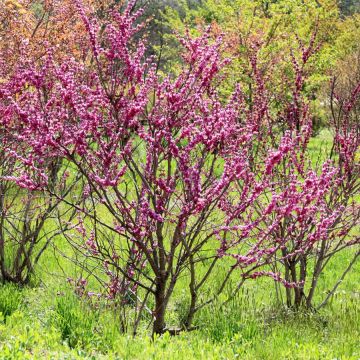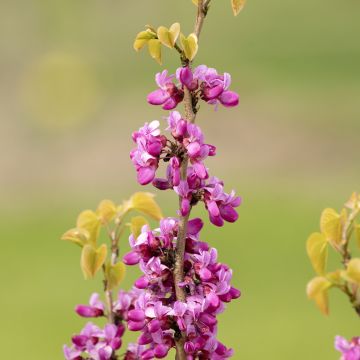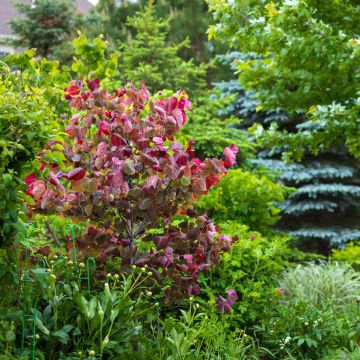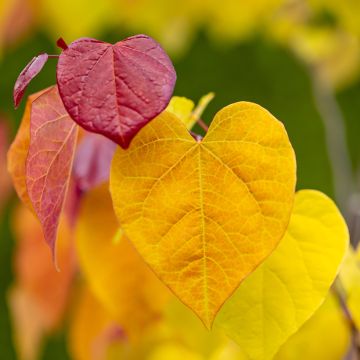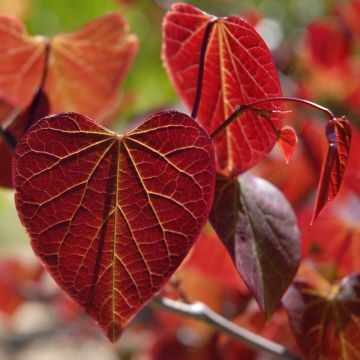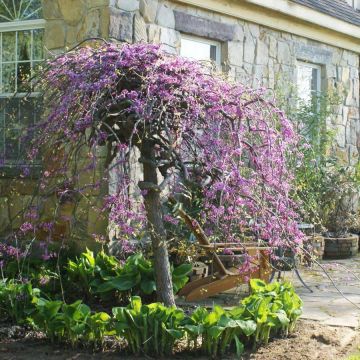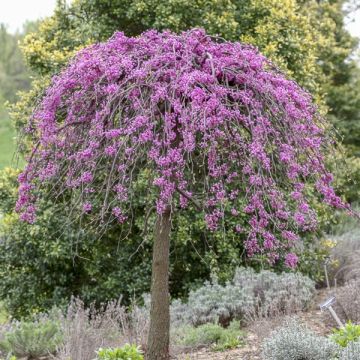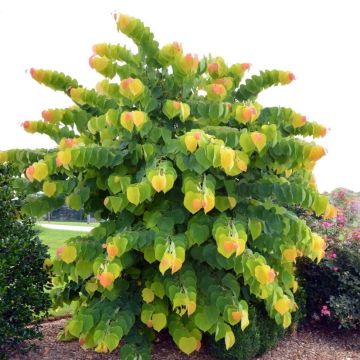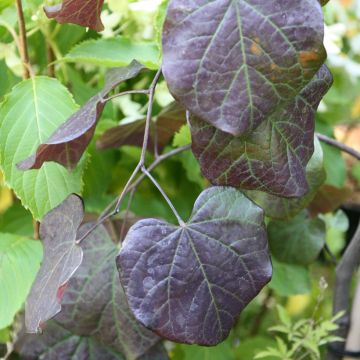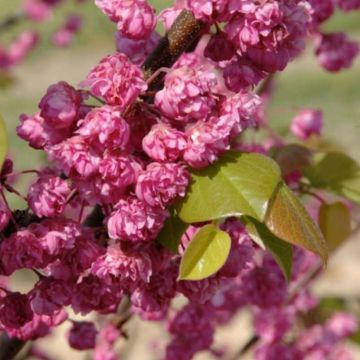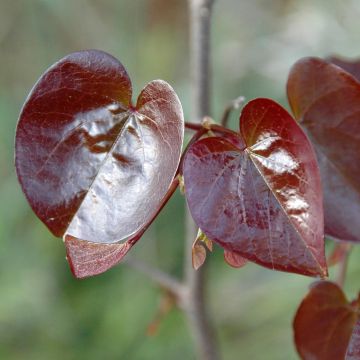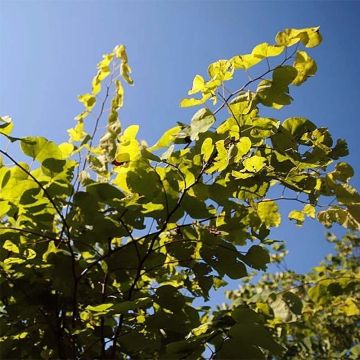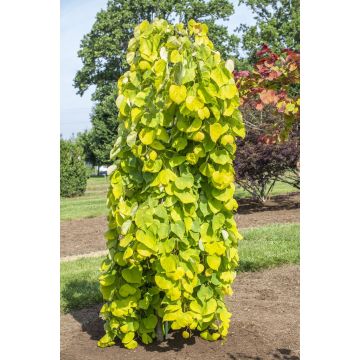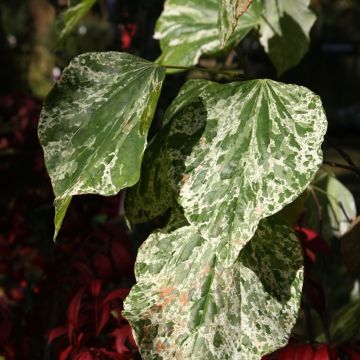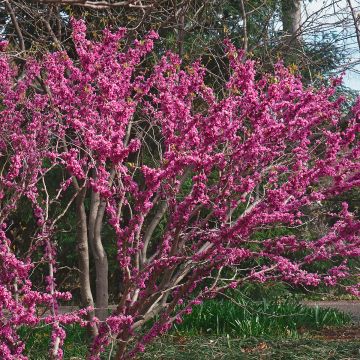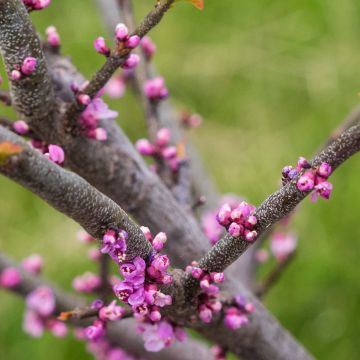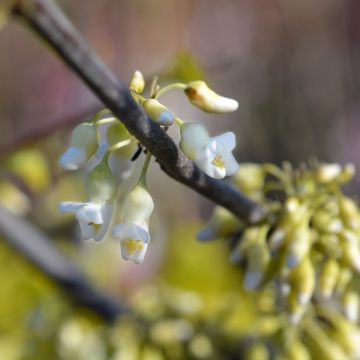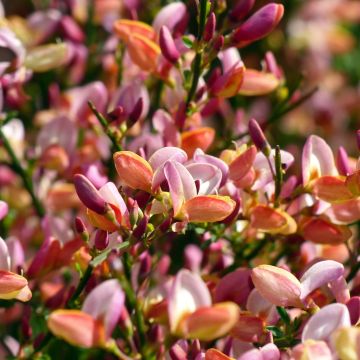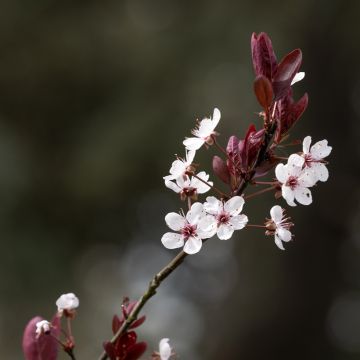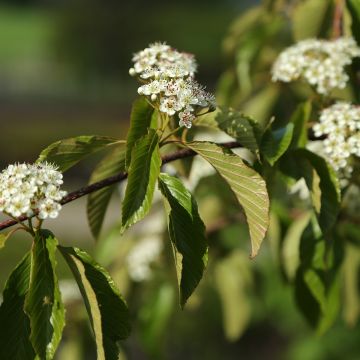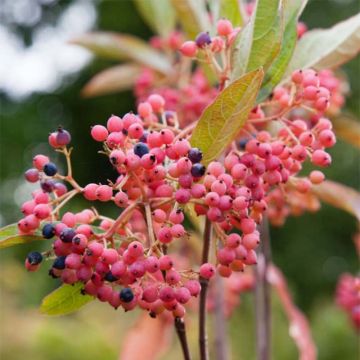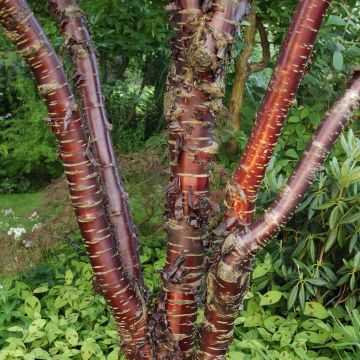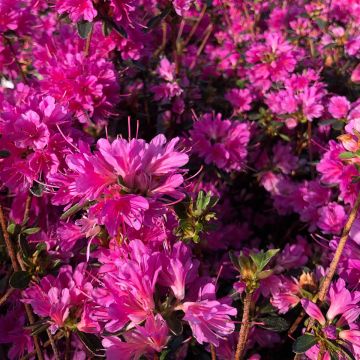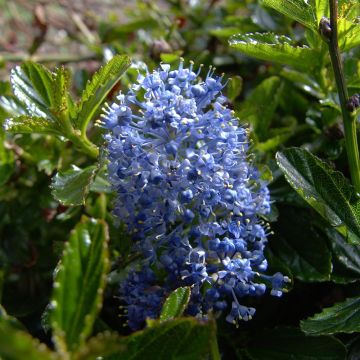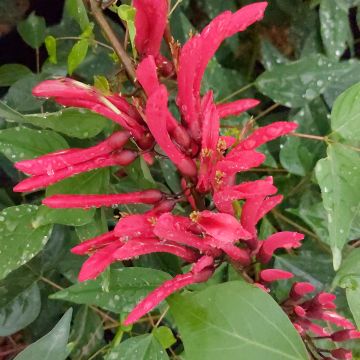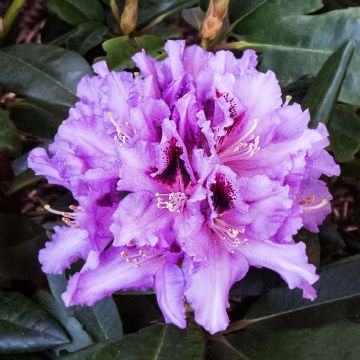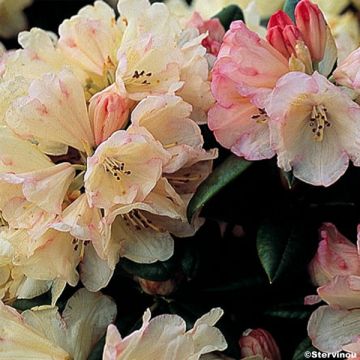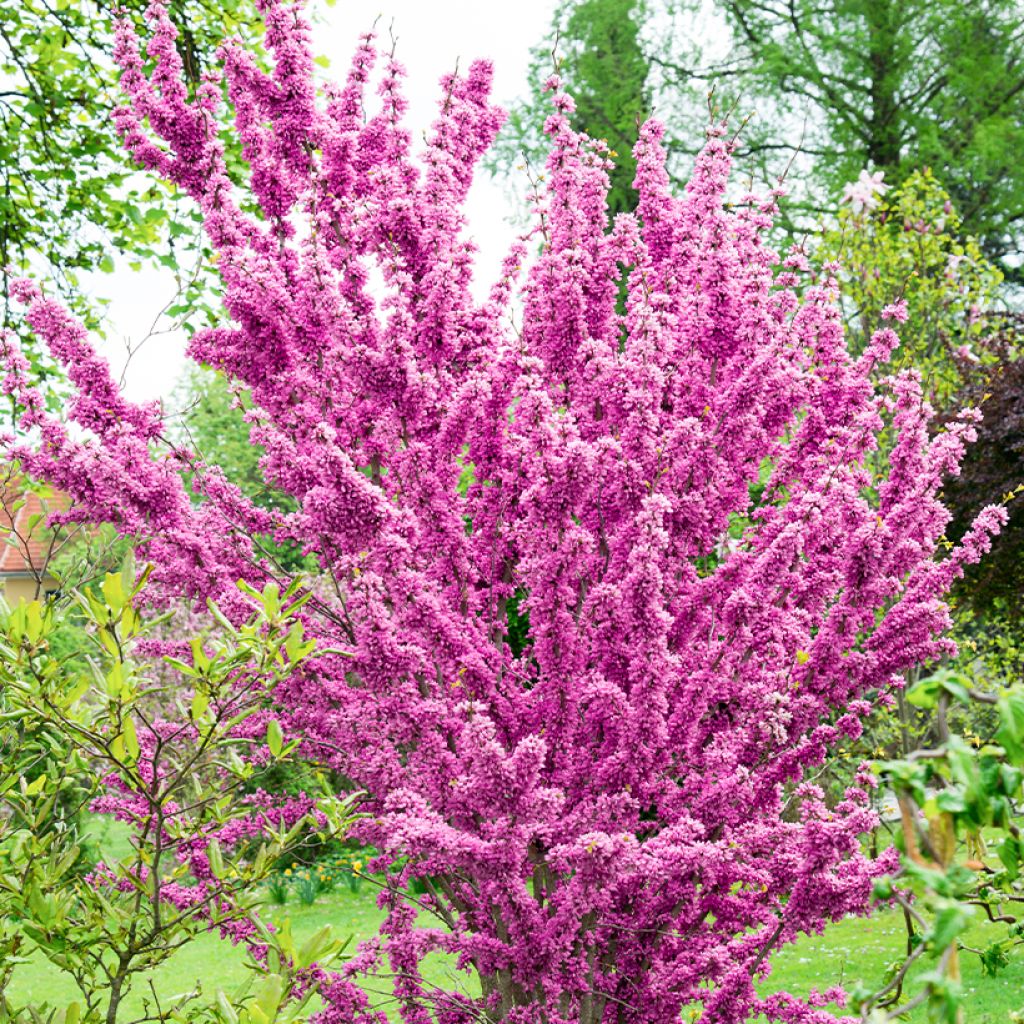

Cercis chinensis Kay's Early Hope
Cercis chinensis Kay's Early Hope
Cercis chinensis Kay's Early Hope
Chinese Redbud
Why not try an alternative variety in stock?
View all →This plant carries a 24 months recovery warranty
More information
We guarantee the quality of our plants for a full growing cycle, and will replace at our expense any plant that fails to recover under normal climatic and planting conditions.
Oversize package: home delivery by special carrier from €6.90 per order..
Express home delivery from €8.90.
Does this plant fit my garden?
Set up your Plantfit profile →
Description
Cercis chinensis 'Kay's Early Hope' is a selection of Chinese redbud quite unique for the abundance and duration of its lavender-pink flowering. This small tree, one of the first to bloom at the end of winter, continues to bloom as its leaves appear and can re-bloom in the second half of summer. It also has larger leaves than other Cercis varieties and a wider habit. The flowers bloom in clusters directly on the branches and even on the trunk. Its cultivation presents no difficulty.
Cercis chinensis 'Kay's Early Hope' comes from seeds collected in the wild in the Chinese province of Hubei in 1996. It is a deciduous tree of the fabaceae or caesalpiniaceae family according to classifications. This small tree or bush, with a spreading habit and branches that start branching from the base, sometimes multi-trunked, shows moderately fast growth. Ultimately, it reaches about 4.50 m in height with a width of 3.75 m. Its development depends, of course, on the growing conditions, it sometimes does not exceed 3.50 m in all directions. The flowers appear before the leaves, in March, directly on the bark. They are remarkably abundant pea flowers, gathered in clusters. The production of flowers continues until well after the emergence of leaves, at least until the end of April. The considerable quantity of lavender-pink flowers, from the tips of the branches to the oldest trunks, constitutes an exceptional spectacle over a prolonged period. Depending on the climate, this variety is capable of re-blooming in August. The fruits, in the form of flattened pods, appear in summer and persist on the plant in winter, much to the delight of birds. The foliage consists of heart-shaped, rounded, quite thick, smooth, 8 to 12 cm long leaves. Their margin is transparent with prominent veins. Theey are bright green in summer, then they turn yellow before falling in autumn. The bark is brown, becoming grey on the trunk or the older branches.
This Chinese cousin of the Judas tree is truly undemanding, it withstands severe cold and grows in ordinary soil, even limestone and dry in summer. Cercis chinensis 'Kay's Early Hope' can be planted as a solitary specimen, or associated in a grove with other easy-to-grow flowering shrubs such as lilacs, large shrub roses, wild and botanical roses, crabapples and ornamental cherries...
Report an error about the product description
Plant habit
Flowering
Foliage
Botanical data
Cercis
chinensis
Kay's Early Hope
Fabaceae
Chinese Redbud
Cultivar or hybrid
Other Cercis
Planting and care
Cercis chinensis 'Kay's Early Hope', like all shrubs, does not appreciate being moved when it is older, that is its only weakness. Its deep root system should not be disturbed. Choose its location carefully, in a sunny exposure. It is not demanding and accepts all well-drained soils, with a preference for limestone. Pruning is not necessary, just remove dead or dry branches and those that detract from the harmony of its silhouette after flowering.
Planting is best done from October to March-April, outside the freezing period. Container-grown specimens can, however, be planted all year round.
When planting, create a watering basin, as young plants need to be regularly watered for the first three years, especially in dry and hot regions.
Planting period
Intended location
Care
This item has not been reviewed yet - be the first to leave a review about it.
Spring-flowering shrubs
Haven't found what you were looking for?
Hardiness is the lowest winter temperature a plant can endure without suffering serious damage or even dying. However, hardiness is affected by location (a sheltered area, such as a patio), protection (winter cover) and soil type (hardiness is improved by well-drained soil).

Photo Sharing Terms & Conditions
In order to encourage gardeners to interact and share their experiences, Promesse de fleurs offers various media enabling content to be uploaded onto its Site - in particular via the ‘Photo sharing’ module.
The User agrees to refrain from:
- Posting any content that is illegal, prejudicial, insulting, racist, inciteful to hatred, revisionist, contrary to public decency, that infringes on privacy or on the privacy rights of third parties, in particular the publicity rights of persons and goods, intellectual property rights, or the right to privacy.
- Submitting content on behalf of a third party;
- Impersonate the identity of a third party and/or publish any personal information about a third party;
In general, the User undertakes to refrain from any unethical behaviour.
All Content (in particular text, comments, files, images, photos, videos, creative works, etc.), which may be subject to property or intellectual property rights, image or other private rights, shall remain the property of the User, subject to the limited rights granted by the terms of the licence granted by Promesse de fleurs as stated below. Users are at liberty to publish or not to publish such Content on the Site, notably via the ‘Photo Sharing’ facility, and accept that this Content shall be made public and freely accessible, notably on the Internet.
Users further acknowledge, undertake to have ,and guarantee that they hold all necessary rights and permissions to publish such material on the Site, in particular with regard to the legislation in force pertaining to any privacy, property, intellectual property, image, or contractual rights, or rights of any other nature. By publishing such Content on the Site, Users acknowledge accepting full liability as publishers of the Content within the meaning of the law, and grant Promesse de fleurs, free of charge, an inclusive, worldwide licence for the said Content for the entire duration of its publication, including all reproduction, representation, up/downloading, displaying, performing, transmission, and storage rights.
Users also grant permission for their name to be linked to the Content and accept that this link may not always be made available.
By engaging in posting material, Users consent to their Content becoming automatically accessible on the Internet, in particular on other sites and/or blogs and/or web pages of the Promesse de fleurs site, including in particular social pages and the Promesse de fleurs catalogue.
Users may secure the removal of entrusted content free of charge by issuing a simple request via our contact form.
The flowering period indicated on our website applies to countries and regions located in USDA zone 8 (France, the United Kingdom, Ireland, the Netherlands, etc.)
It will vary according to where you live:
- In zones 9 to 10 (Italy, Spain, Greece, etc.), flowering will occur about 2 to 4 weeks earlier.
- In zones 6 to 7 (Germany, Poland, Slovenia, and lower mountainous regions), flowering will be delayed by 2 to 3 weeks.
- In zone 5 (Central Europe, Scandinavia), blooming will be delayed by 3 to 5 weeks.
In temperate climates, pruning of spring-flowering shrubs (forsythia, spireas, etc.) should be done just after flowering.
Pruning of summer-flowering shrubs (Indian Lilac, Perovskia, etc.) can be done in winter or spring.
In cold regions as well as with frost-sensitive plants, avoid pruning too early when severe frosts may still occur.
The planting period indicated on our website applies to countries and regions located in USDA zone 8 (France, United Kingdom, Ireland, Netherlands).
It will vary according to where you live:
- In Mediterranean zones (Marseille, Madrid, Milan, etc.), autumn and winter are the best planting periods.
- In continental zones (Strasbourg, Munich, Vienna, etc.), delay planting by 2 to 3 weeks in spring and bring it forward by 2 to 4 weeks in autumn.
- In mountainous regions (the Alps, Pyrenees, Carpathians, etc.), it is best to plant in late spring (May-June) or late summer (August-September).
The harvesting period indicated on our website applies to countries and regions in USDA zone 8 (France, England, Ireland, the Netherlands).
In colder areas (Scandinavia, Poland, Austria...) fruit and vegetable harvests are likely to be delayed by 3-4 weeks.
In warmer areas (Italy, Spain, Greece, etc.), harvesting will probably take place earlier, depending on weather conditions.
The sowing periods indicated on our website apply to countries and regions within USDA Zone 8 (France, UK, Ireland, Netherlands).
In colder areas (Scandinavia, Poland, Austria...), delay any outdoor sowing by 3-4 weeks, or sow under glass.
In warmer climes (Italy, Spain, Greece, etc.), bring outdoor sowing forward by a few weeks.

































